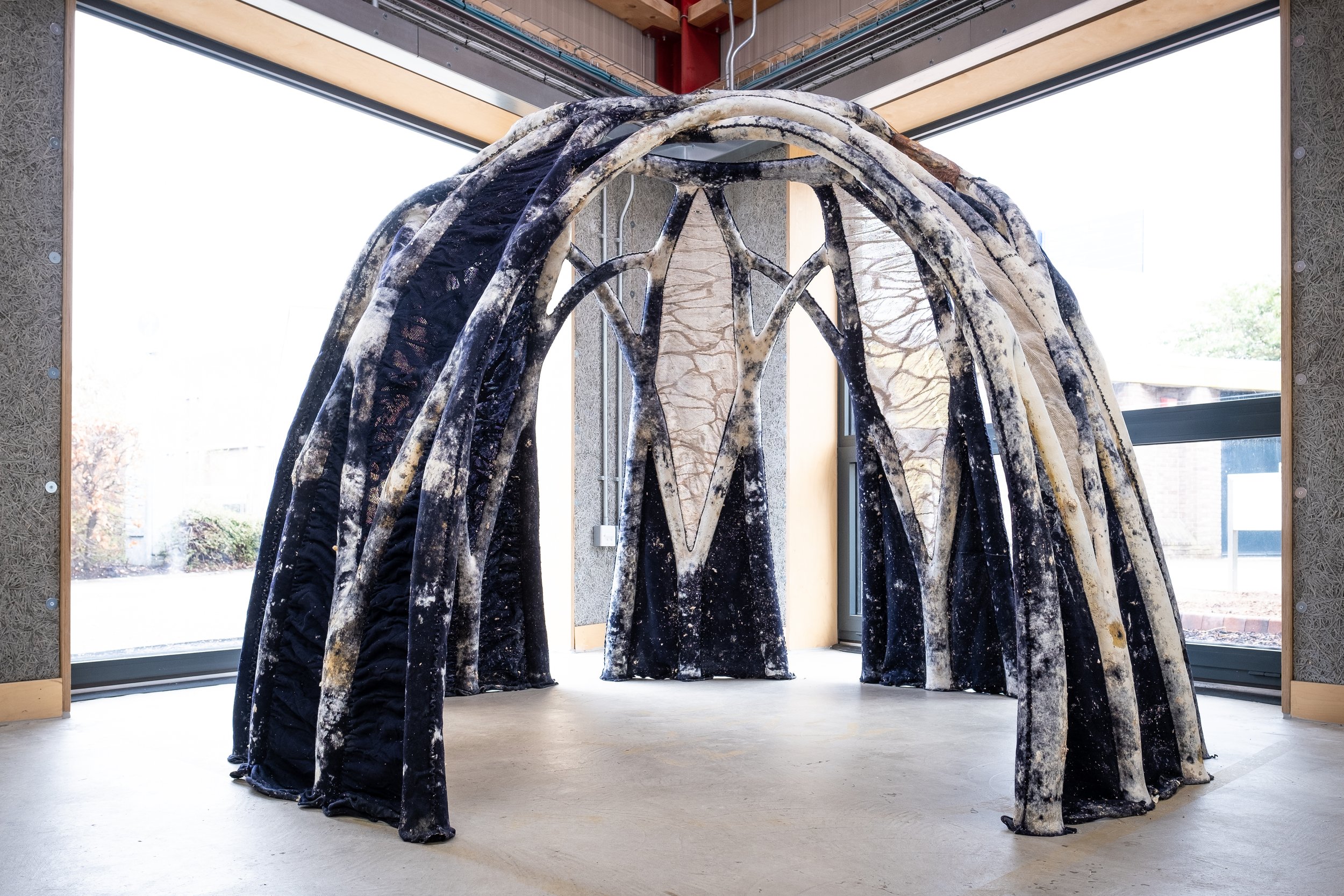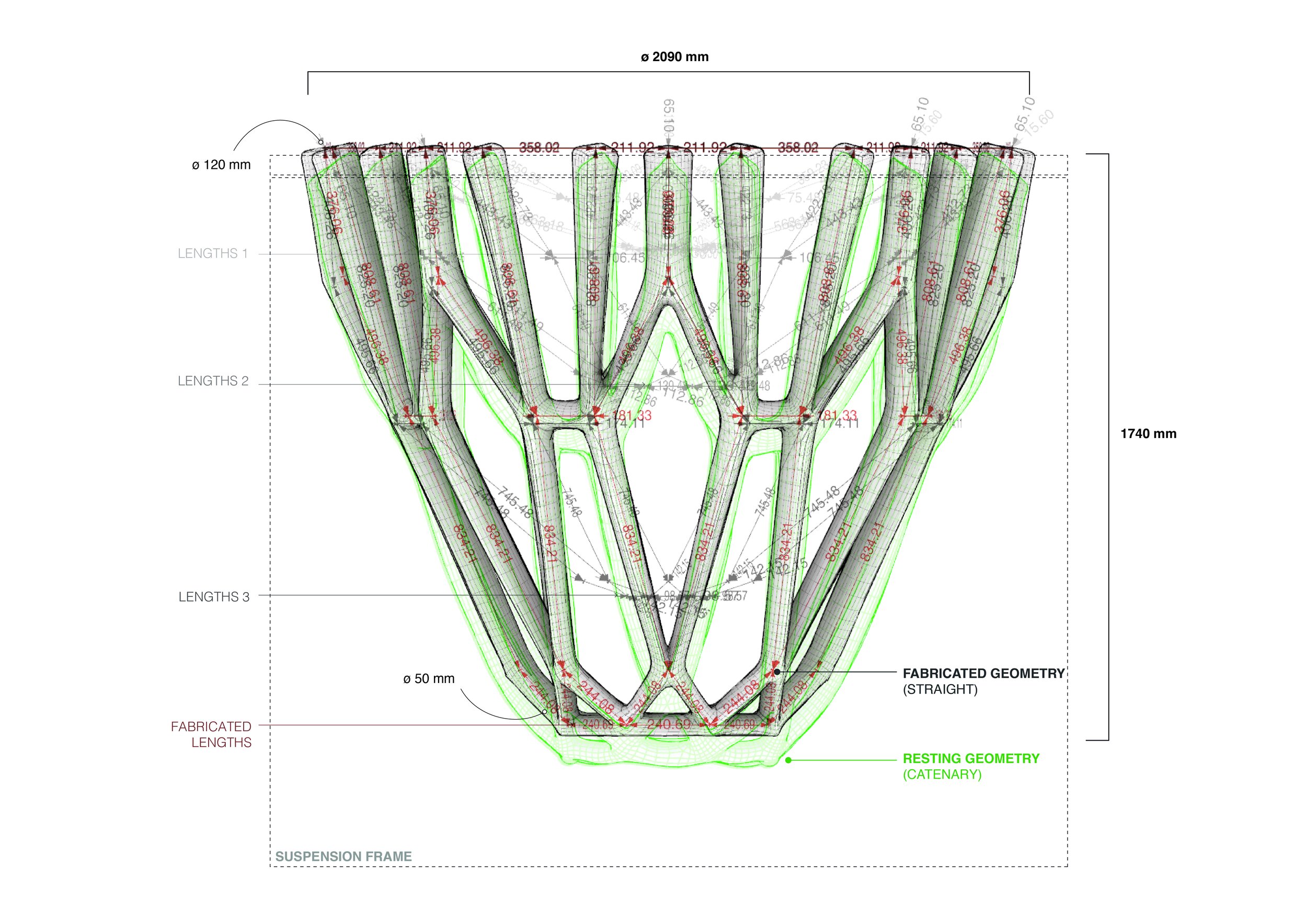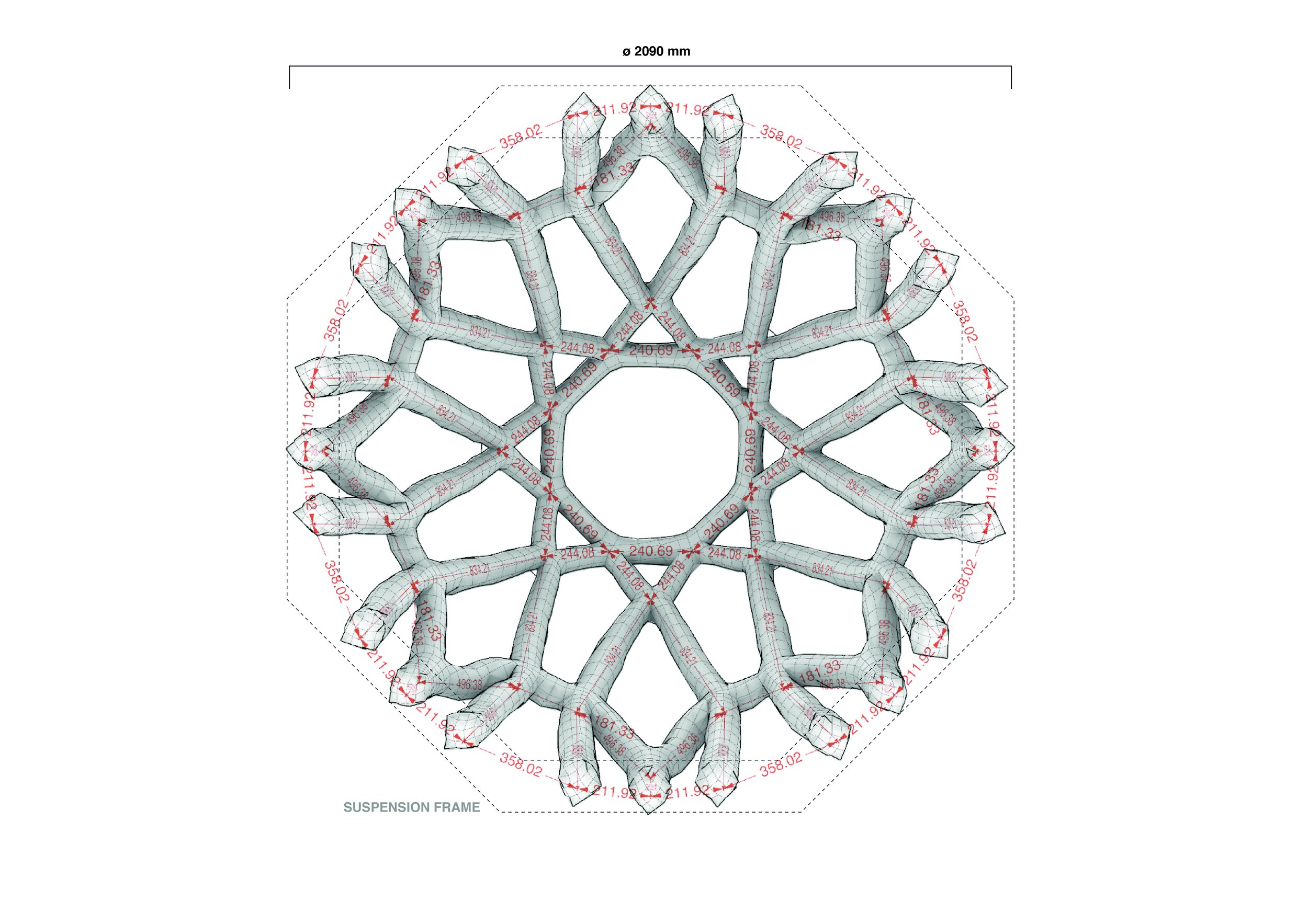
A team of designers and scientists from the Hub for Biotechnology and the Built Environment are exploring how 3D knitted fabric can be programmed and applied structurally at human scale using fungi, bacteria, and simple physics. After weeks of material testing and observing living samples, their recent BioKnit Prototype provides a novel solution to upscaling mycelium construction and explores more organic and tactile approaches to architecture.
The BioKnit Prototype brings together biotechnology, digital fabrication, and computation in the production of a monolithic free-standing biohybrid structure. BioKnit was not grown in the lab. Instead the team’s expertise with living materials enabled the growth stage to take place in “The OME” an experimental test bed in Newcastle. The prototype is composed of mycelium, cellulose (produced by bacteria), and 3D knitting (knitted from wool and linen). These materials have a dramatically lower environmental impact compared to conventional construction materials and provide the opportunity to radically rethink how we build.
What could a biological architecture look like?
BioKnit employs knitted fabric as a scaffold and scaling agent to guide the growth of mycelium and form a bespoke composite. The structure provides the framework to host 2m long bacterial cellulose panels pre-grown to predetermined shapes. Uniquely, the knitted formwork enabled the 1.8m high, 2m diameter structure to be grown as a single piece. The prototype demonstrates that the mycelium-knit composite has sufficient compressive strength to support a free-standing, slender vault. Bacterial cellulose has been applied as a tactile skin and surface treatment to explore the material’s expressive qualities as a biohybrid in combination with mycelium and knitting.
How can growth replace construction?
The design workflow integrated computational modelling with knit programming to create specifications for branching preforms produced using 3D knit technologies. These tools allowed for tuning of variations in thicknesses and materials in a seamless shaped panels with integrated tubular components. It also allowed for physics simulations and refinement of the knit structure prior to fabrication.
The optimised curvature of the vault was achieved by exploiting the textile’s behaviour in tension. The prototype was formed by hanging the assembled structure in a soft state to form a catenary hammock prior to consolidation via mycelium growth. This approach employs the understanding utilised in many architectural vernaculars that the curve of a hanging cable, when inverted, provides an optimal arch structure which works entirely in compression.
The mycelium substrate has been specifically designed for use with textiles to enhance the consistency and improve workability in soft moulds. It combines the mycelium with carefully proportioned mix of nutrients to create a substrate that is fast growing for strong, cohesive growth. Controlled environmental conditions are key to ensuring a consistent and homogenous structure. The team is also developing techniques to ensure resilience in the material outside the lab so that it can be a viable construction technology to apply in-situ.
The hybrid technologies employed in the BioKnit project seek to achieve a novel structural system that is more resilient, adaptable, and viable than the sum of its parts. The multidisciplinary team behind the research see BioKnit as an exciting initial proof of concept; future prototypes will use similar fabrication methods to create even larger self-supporting structures for both internal and external applications.
This research is part of a series of prototypes developed in the Hub for Biotechnology in the Built Environment (HBBE). HBBE is funded by Research England and is a joint initiative between Newcastle University and Northumbria University.
Research Team: Jane Scott, Dilan Ozkan, Aileen Hoenerloh, Romy Kaiser, Armand Agraviador, Ahmet Topcu, Ben Bridgens, Elise Elsacker.
With special thanks to Emily Birch and Roberta Morrow for their assistance in early stage design experimentation.














